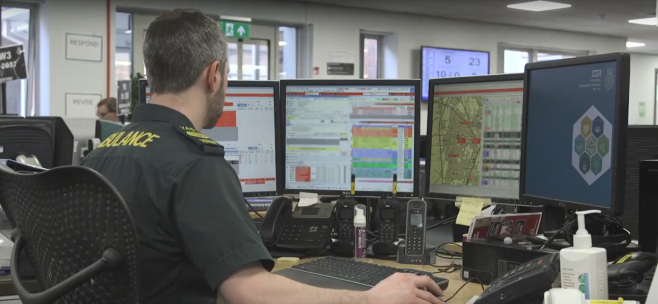You are here
Emergency operations centre rotation
Specialist and advanced paramedics work in the Emergency Operations Centre - sometimes referred to as the Ambulance Control Room or Clinical Contact Centre.

They identify high volume, high conveyance rate and low acuity 999 calls to the ambulance service that could be more appropriately managed by a member of the community multi-disciplinary team (MDT).
This may be the specialist or advanced paramedic who is on that rotation or another member of the MDT such as a respiratory specialist for breathing difficulty calls or occupational therapist and physiotherapists for minor injury falls cases.
This results in:
- More patients, many with multiple and complex conditions, receiving the right care, first time - safely managed in their own homes or in the community.
- Fewer avoidable attendances at A&E and fewer subsequent admissions to hospital.
- Ambulance service resources are more available to respond to life-threatening 999 calls.
- Raising the profile of all healthcare professions as a result of integrated working.
You can watch a video about the Emergency Operations Centre part of the rotation above.
Spending time in the Emergency Operations Centre as part of the paramedic rotation allows 999 calls to be diverted to rotating paramedic colleagues on the road who can avoid an ambulance call out and the patient being taken to hospital. Here, a rotating paramedic from the Sheffield pilot describes one recent case.
“Working at the Emergency Operations Centre at Yorkshire Ambulance Service (YAS) HQ allows me to monitor incoming 999 calls.
I recently intercepted a 999 call for a patient who had suffered a head injury at a gym. I cancelled the automatic ambulance response, and instead dispatched a specialist paramedic. Meanwhile I gave advice to the gym staff while they waited to streamline the care delivered and was able to update the specialist paramedic with pertinent information before they arrived. The specialist paramedic attended and closed the wound so they could be discharged home with an appropriate safety netting plan.
This prevented YAS dispatching a double crewed 999 ambulance with less urgent-care experience, who may well have taken the patient to A&E.”